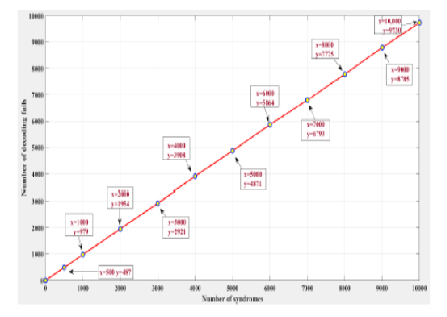


Indian Journal of Science and Technology
DOI: 10.17485/IJST/v16i48.1871
Year: 2023, Volume: 16, Issue: 48, Pages: 4638-4647
Original Article
Rupali Khurana1, Ekta Narwal1*, Deepika2
1Department of Mathematics, Maharshi Dayanand University, Rohtak, Haryana, India
2Universitat Rovira i Virgili, Avinguda Catalunya, Tarragona, Spain
*Corresponding Author
Email: [email protected]
Received Date:25 July 2023, Accepted Date:25 November 2023, Published Date:28 December 2023
Objectives: The aim of this study is to design a MATLAB algorithm that will identify decodable syndromes easily. Methods: The most time-consuming step in developing code-based digital signature schemes is to identify a decodable syndrome. So, to find a decodable syndrome in a short period of time several padding techniques are presented in this paper. Our study uses a polar code with blocklength 16 with a rate of 0.5, and its Successive Cancellation (SC) decoding algorithm is used to decode the syndrome. The techniques suggested in this paper can be used to generate polar code-based digital signatures more quickly. Findings: Our study evaluates the effectiveness of padding techniques by simulating random syndromes 10,000 times over Binary Symmetric Channel (BSC) and Additive White Gaussian Noise (AWGN) channel by calculating the success rate, failure rate, and mean failure count for each channel. Novelty: In this paper, we present graphs showing the number of syndromes that failed to decode in the BSC and AWGN channels when simulating a predefined number of times. Additionally, we calculate the success rate, failure rate, and mean failure count of decoding for both channels, which demonstrate that the proposed padding techniques are highly effective in decoding syndromes in AWGN.
Keywords: Quantum computing, Post-Quantum digital signature, Decodable syndromes, Padding, Polar codes, Successive cancellation decoding
© 2023 Khurana et al. This is an open-access article distributed under the terms of the Creative Commons Attribution License, which permits unrestricted use, distribution, and reproduction in any medium, provided the original author and source are credited. Published By Indian Society for Education and Environment (iSee)
Subscribe now for latest articles and news.